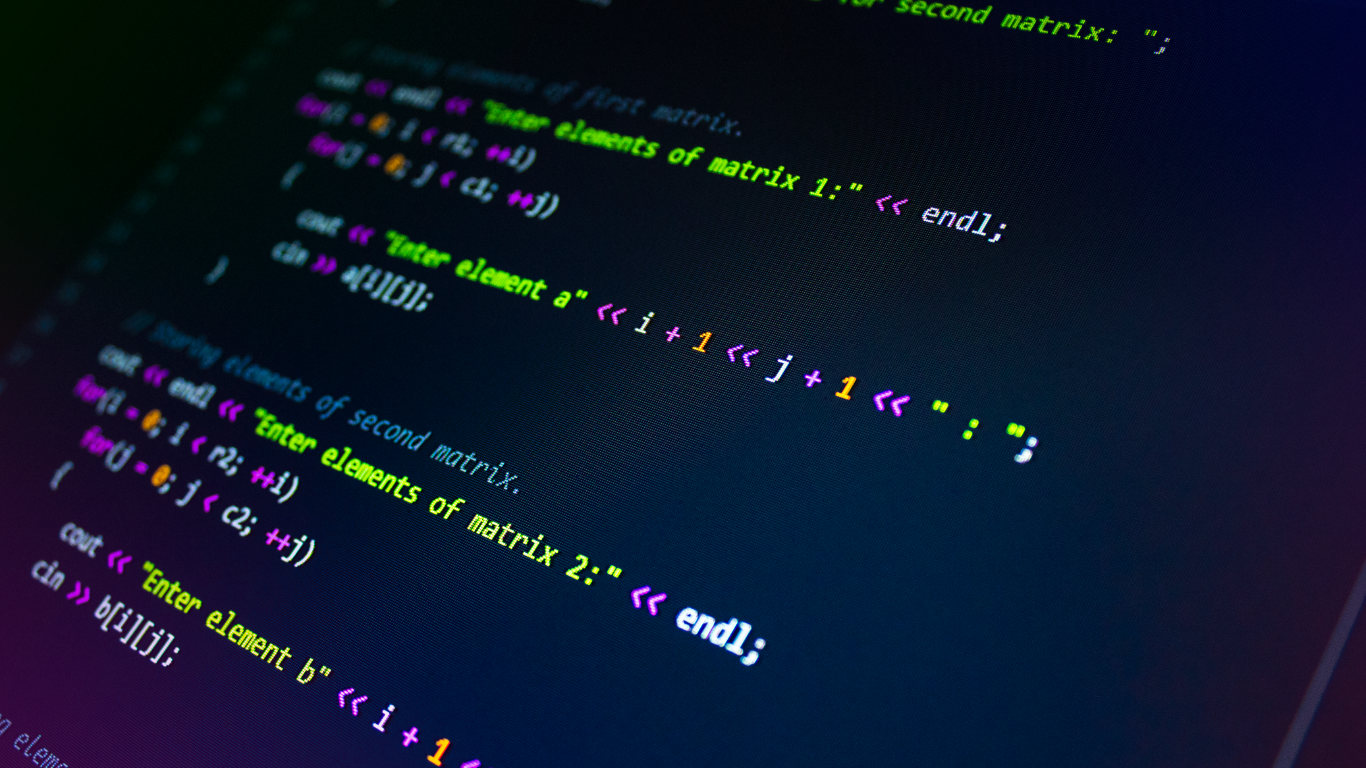If you’ve searched for “C program for matrix multiplication”, you’re likely eager to dive into one of programming’s core concepts using the powerful and efficient C language. As of March 21, 2025, C remains a foundational language for developers, and understanding how to multiply matrices is a key skill that enhances your ability to handle mathematical computations and data structures. Whether you’re a student tackling assignments, a hobbyist exploring coding, or a professional optimizing algorithms, this guide will walk you through everything you need to know about writing a C program for matrix multiplication.
From basic implementations to advanced techniques like dynamic memory allocation, we’ll provide clear code examples, explain each step, and explore real-world applications. By the end, you’ll be equipped to multiply matrices in C with confidence and precision. Let’s get started and unlock the power of matrix multiplication in C!
What Is Matrix Multiplication?
Before we code, let’s define matrix multiplication. In mathematics, matrix multiplication is an operation where two matrices are combined to produce a third matrix. Unlike element-wise multiplication, it involves a specific rule: the number of columns in the first matrix must equal the number of rows in the second matrix.
Rules for Matrix Multiplication
- Matrix A: Size m × n (m rows, n columns).
- Matrix B: Size p × q (p rows, q columns).
- Condition: n must equal p.
- Resulting Matrix C: Size m × q.
Each element in the resulting matrix C[i][j] is the dot product of row i from Matrix A and column j from Matrix B:
- C[i][j] = A[i][0] × B[0][j] + A[i][1] × B[1][j] + … + A[i][n-1] × B[n-1][j]
Example
- Matrix A (2×3): [[1, 2, 3], [4, 5, 6]]
- Matrix B (3×2): [[7, 8], [9, 10], [11, 12]]
- Result C (2×2): [[58, 64], [139, 154]]
This operation is fundamental in linear algebra, computer graphics, and data science.
Why Write a C Program for Matrix Multiplication?
C’s low-level control, speed, and memory management make it ideal for matrix operations. Writing a C program for matrix multiplication helps you:
- Master nested loops and array handling.
- Understand computational complexity (O(n³) for standard multiplication).
- Prepare for technical interviews and academic projects.
- Apply it to real-world problems like image processing or machine learning.
Basic C Program for Matrix Multiplication (Static Arrays)
Let’s start with a simple program using static arrays:
cCollapseWrapCopy
#include <stdio.h> void matrixMultiply(int a[][3], int b[][2], int c[][2], int rowsA, int colsA, int colsB) { for (int i = 0; i < rowsA; i++) { for (int j = 0; j < colsB; j++) { c[i][j] = 0; // Initialize result element for (int k = 0; k < colsA; k++) { c[i][j] += a[i][k] * b[k][j]; } } } } void printMatrix(int matrix[][2], int rows, int cols) { for (int i = 0; i < rows; i++) { for (int j = 0; j < cols; j++) { printf("%d ", matrix[i][j]); } printf("\n"); } } int main() { int a[2][3] = {{1, 2, 3}, {4, 5, 6}}; int b[3][2] = {{7, 8}, {9, 10}, {11, 12}}; int c[2][2]; // Result matrix int rowsA = 2, colsA = 3, colsB = 2; printf("Matrix A:\n"); printMatrix(a, rowsA, colsA); printf("\nMatrix B:\n"); printMatrix(b, colsA, colsB); matrixMultiply(a, b, c, rowsA, colsA, colsB); printf("\nResult Matrix C:\n"); printMatrix(c, rowsA, colsB); return 0; }
How It Works
- Input: Two matrices a (2×3) and b (3×2).
- Logic:
- Three nested loops:
- i: Rows of Matrix A.
- j: Columns of Matrix B.
- k: Columns of A/Rows of B (dot product).
- Computes each c[i][j] as the sum of products.
- Three nested loops:
- Output: Prints the resulting c (2×2).
Sample Output:
textCollapseWrapCopy
Matrix A: 1 2 3 4 5 6 Matrix B: 7 8 9 10 11 12 Result Matrix C: 58 64 139 154
Time Complexity: O(n³), where n is the matrix dimension (assuming square matrices).
C Program with User Input for Matrix Multiplication
Let’s make it interactive:
cCollapseWrapCopy
#include <stdio.h> void inputMatrix(int matrix[][10], int rows, int cols, char name) { printf("Enter elements of Matrix %c (%dx%d):\n", name, rows, cols); for (int i = 0; i < rows; i++) { for (int j = 0; j < cols; j++) { scanf("%d", &matrix[i][j]); } } } void matrixMultiply(int a[][10], int b[][10], int c[][10], int rowsA, int colsA, int colsB) { for (int i = 0; i < rowsA; i++) { for (int j = 0; j < colsB; j++) { c[i][j] = 0; for (int k = 0; k < colsA; k++) { c[i][j] += a[i][k] * b[k][j]; } } } } void printMatrix(int matrix[][10], int rows, int cols) { for (int i = 0; i < rows; i++) { for (int j = 0; j < cols; j++) { printf("%d ", matrix[i][j]); } printf("\n"); } } int main() { int rowsA, colsA, rowsB, colsB; printf("Enter rows and columns for Matrix A: "); scanf("%d %d", &rowsA, &colsA); printf("Enter rows and columns for Matrix B: "); scanf("%d %d", &rowsB, &colsB); if (colsA != rowsB) { printf("Error: Columns of A must equal rows of B for multiplication.\n"); return 1; } int a[10][10], b[10][10], c[10][10]; inputMatrix(a, rowsA, colsA, 'A'); inputMatrix(b, rowsB, colsB, 'B'); printf("\nMatrix A:\n"); printMatrix(a, rowsA, colsA); printf("\nMatrix B:\n"); printMatrix(b, rowsB, colsB); matrixMultiply(a, b, c, rowsA, colsA, colsB); printf("\nResult Matrix C:\n"); printMatrix(c, rowsA, colsB); return 0; }
How It Works
- Input: User specifies matrix dimensions and elements.
- Validation: Checks if colsA == rowsB.
- Computation: Multiplies matrices using nested loops.
- Output: Displays all matrices.
Sample Output:
textCollapseWrapCopy
Enter rows and columns for Matrix A: 2 3 Enter rows and columns for Matrix B: 3 2 Enter elements of Matrix A (2x3): 1 2 3 4 5 6 Enter elements of Matrix B (3x2): 7 8 9 10 11 12 Matrix A: 1 2 3 4 5 6 Matrix B: 7 8 9 10 11 12 Result Matrix C: 58 64 139 154
C Program with Dynamic Memory Allocation
Static arrays limit flexibility. Use pointers and dynamic memory for variable sizes:
cCollapseWrapCopy
#include <stdio.h> #include <stdlib.h> int** createMatrix(int rows, int cols) { int** matrix = (int**)malloc(rows * sizeof(int*)); for (int i = 0; i < rows; i++) { matrix[i] = (int*)malloc(cols * sizeof(int)); } return matrix; } void inputMatrix(int** matrix, int rows, int cols, char name) { printf("Enter elements of Matrix %c (%dx%d):\n", name, rows, cols); for (int i = 0; i < rows; i++) { for (int j = 0; j < cols; j++) { scanf("%d", &matrix[i][j]); } } } void matrixMultiply(int** a, int** b, int** c, int rowsA, int colsA, int colsB) { for (int i = 0; i < rowsA; i++) { for (int j = 0; j < colsB; j++) { c[i][j] = 0; for (int k = 0; k < colsA; k++) { c[i][j] += a[i][k] * b[k][j]; } } } } void printMatrix(int** matrix, int rows, int cols) { for (int i = 0; i < rows; i++) { for (int j = 0; j < cols; j++) { printf("%d ", matrix[i][j]); } printf("\n"); } } void freeMatrix(int** matrix, int rows) { for (int i = 0; i < rows; i++) { free(matrix[i]); } free(matrix); } int main() { int rowsA, colsA, rowsB, colsB; printf("Enter rows and columns for Matrix A: "); scanf("%d %d", &rowsA, &colsA); printf("Enter rows and columns for Matrix B: "); scanf("%d %d", &rowsB, &colsB); if (colsA != rowsB) { printf("Error: Columns of A must equal rows of B.\n"); return 1; } int** a = createMatrix(rowsA, colsA); int** b = createMatrix(rowsB, colsB); int** c = createMatrix(rowsA, colsB); inputMatrix(a, rowsA, colsA, 'A'); inputMatrix(b, rowsB, colsB, 'B'); matrixMultiply(a, b, c, rowsA, colsA, colsB); printf("\nMatrix A:\n"); printMatrix(a, rowsA, colsA); printf("\nMatrix B:\n"); printMatrix(b, rowsB, colsB); printf("\nResult Matrix C:\n"); printMatrix(c, rowsA, colsB); freeMatrix(a, rowsA); freeMatrix(b, rowsB); freeMatrix(c, rowsA); return 0; }
How It Works
- Dynamic Allocation: Uses malloc to create matrices of any size.
- Memory Management: Frees allocated memory to prevent leaks.
- Flexibility: Handles user-defined dimensions.
Output: Same as above, but with dynamic sizing.
Optimizing Matrix Multiplication in C
The standard O(n³) algorithm can be optimized:
1. Strassen’s Algorithm
- Complexity: O(n²·⁸¹) ≈ O(n²·⁸).
- Method: Divides matrices into submatrices, reducing multiplications via seven recursive steps.
- Use Case: Large matrices (n > 100).
C Implementation: Complex and beyond basic scope, but libraries like LAPACK offer it.
2. Loop Unrolling
- Reduces loop overhead:
cCollapseWrapCopy
for (int i = 0; i < rowsA; i++) { for (int j = 0; j < colsB; j += 2) { c[i][j] = c[i][j+1] = 0; for (int k = 0; k < colsA; k++) { c[i][j] += a[i][k] * b[k][j]; c[i][j+1] += a[i][k] * b[k][j+1]; } } }
3. Cache Optimization
- Access matrices in blocks to leverage CPU cache, reducing memory fetch time.
Common Pitfalls and Debugging Tips
Avoid these errors:
- Dimension Mismatch: Check colsA == rowsB.
- Memory Overflow: Use long or dynamic allocation for large matrices.
- Uninitialized Result: Set c[i][j] = 0 before computation.
- Memory Leaks: Free dynamically allocated memory.
Real-World Applications
A C program for matrix multiplication is practical:
- Graphics: Transformations (rotation, scaling).
- Machine Learning: Neural network computations.
- Physics: Solving systems of equations.
- Data Analysis: Correlation matrices.
Frequently Asked Questions About C Program for Matrix Multiplication
What Is a C Program for Matrix Multiplication?
A program that multiplies two matrices using C code.
Why Use C for Matrix Multiplication?
C offers speed and control over memory.
What’s the Time Complexity?
O(n³) for the standard method.
How Do I Handle Large Matrices?
Use dynamic memory allocation or optimized algorithms.
Can I Multiply Non-Square Matrices?
Yes, if colsA == rowsB.
Conclusion: Mastering Matrix Multiplication in C
Writing a C program for matrix multiplication is a gateway to mastering arrays, loops, and memory management in C. From static arrays to dynamic allocation, you’ve now got the tools to tackle matrix operations in 2025’s coding landscape. Whether for school, work, or curiosity, these skills will empower you to solve complex problems efficiently.
Grab your compiler, run these examples, and experiment with your own matrices.




